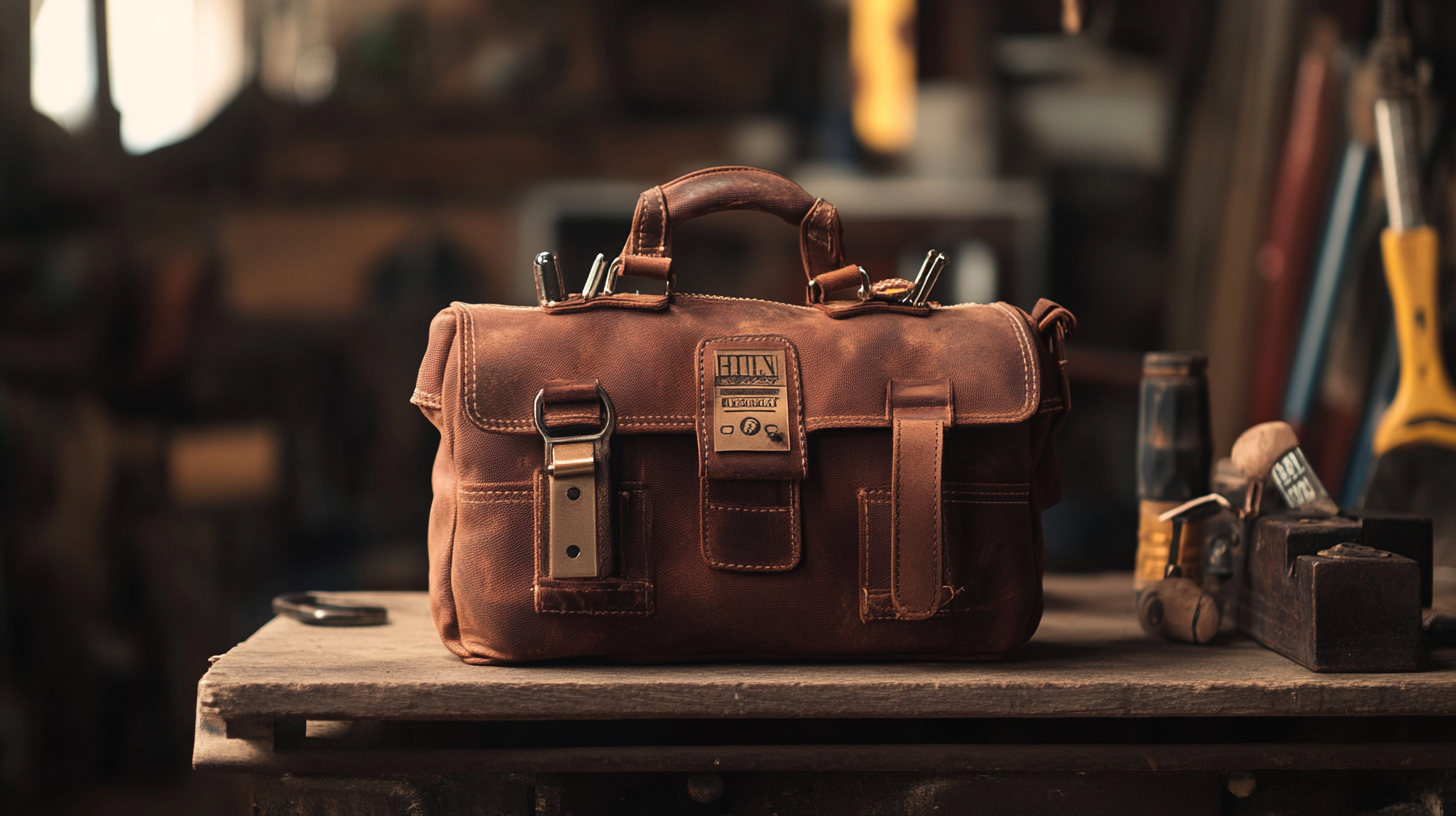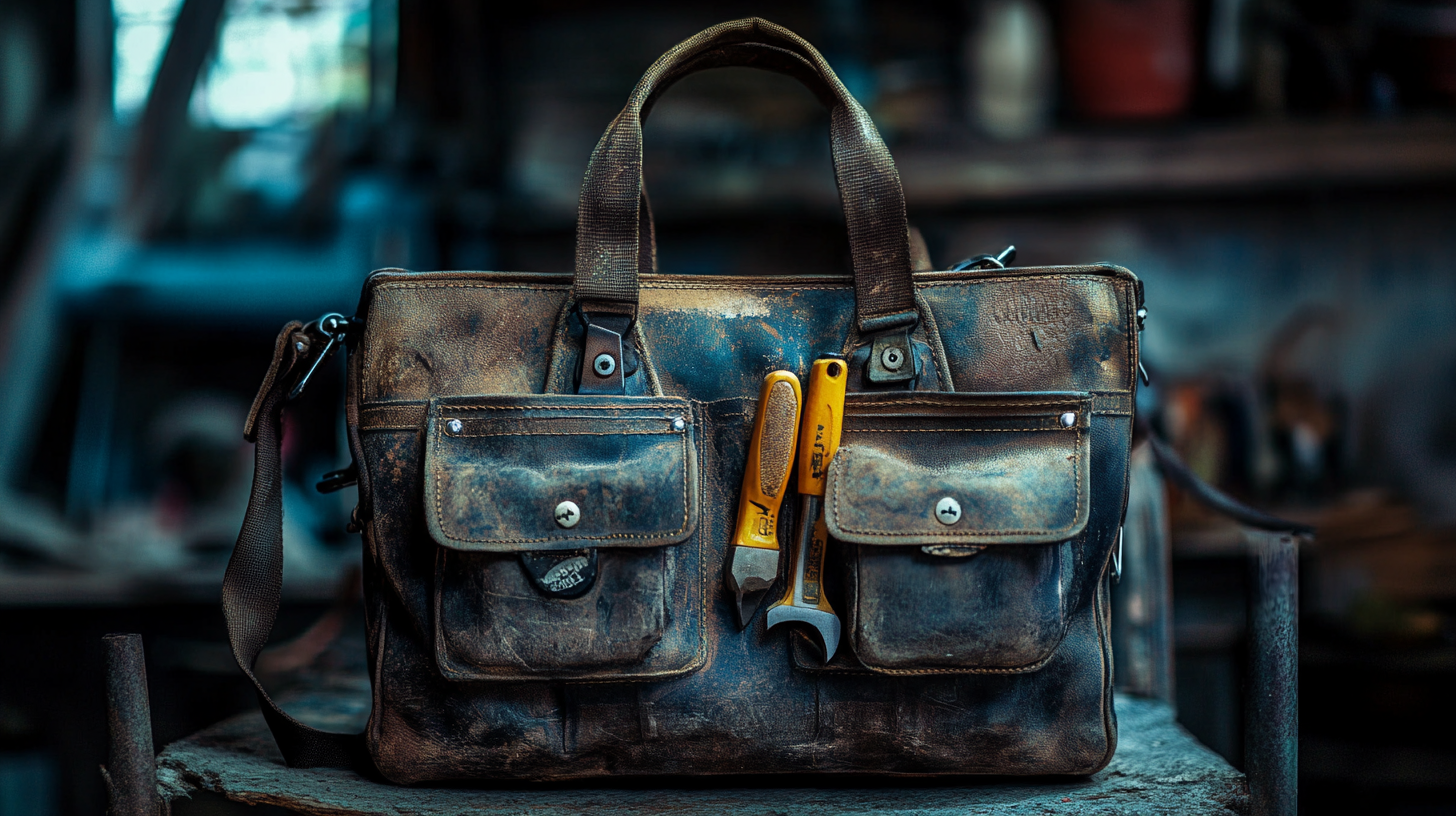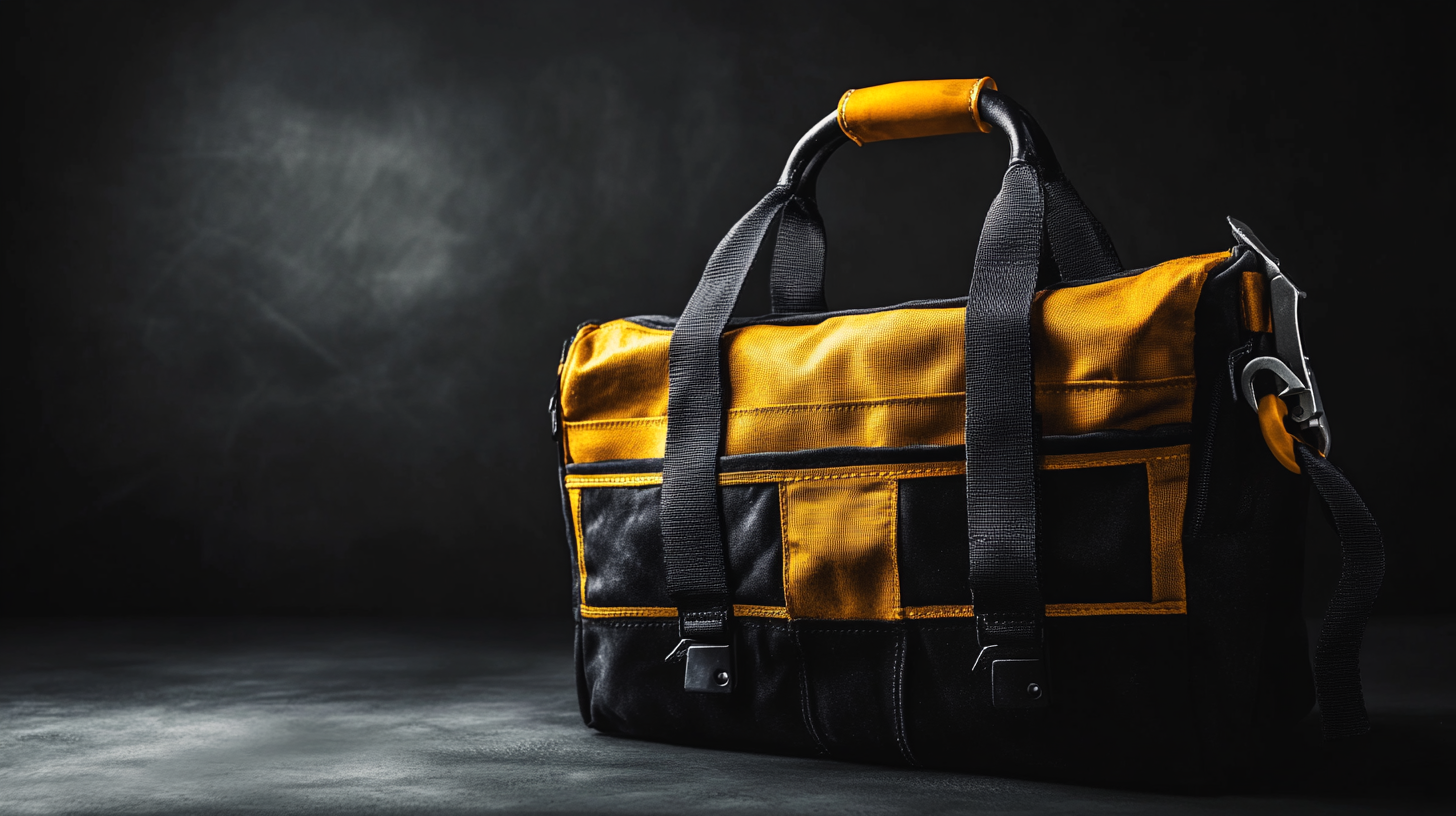- 0086-0769-87986375
- Welcome you to Dongguan Yili Bags Co., Ltd. website!
Emerging Innovations in Best Durable Tool Bag Designs for 2025
 As we look towards 2025, the demand for high-quality, Durable Tool Bags is anticipated to reach unprecedented levels, driven by the growing construction and DIY sectors. According to a recent market research report by Technavio, the global tool bag market is expected to grow by over 8% annually, reflecting a rising trend in the need for longer-lasting, robust storage solutions among both professionals and hobbyists. Innovations in materials and design are vital as consumers prioritize functionality, durability, and convenience in their tool management systems. This blog will explore emerging innovations in Durable Tool Bag designs that not only meet these evolving demands but also enhance user experience and productivity, ultimately setting new standards in the industry.
As we look towards 2025, the demand for high-quality, Durable Tool Bags is anticipated to reach unprecedented levels, driven by the growing construction and DIY sectors. According to a recent market research report by Technavio, the global tool bag market is expected to grow by over 8% annually, reflecting a rising trend in the need for longer-lasting, robust storage solutions among both professionals and hobbyists. Innovations in materials and design are vital as consumers prioritize functionality, durability, and convenience in their tool management systems. This blog will explore emerging innovations in Durable Tool Bag designs that not only meet these evolving demands but also enhance user experience and productivity, ultimately setting new standards in the industry.
Innovations in Material Technology: Enhancing Durability and Performance in Tool Bags
As we approach 2025, the landscape of tool bag designs is set to be revolutionized by innovations in material technology. Modern durable tool bags are moving beyond traditional fabrics, incorporating cutting-edge materials that promise not only enhanced longevity but also superior performance. For instance, advancements in synthetic fibers and waterproof coatings are making tool bags resistant to harsh environmental conditions, ensuring that tools remain protected, no matter where the job takes you.
Moreover, the introduction of smart materials, such as self-healing fabrics and lightweight composites, is reshaping the functionality and usability of tool bags. These materials allow for greater flexibility and resilience, catering to various user needs without compromising structural integrity. Additionally, features like integrated shock-absorbing padding and ergonomic designs are being seamlessly integrated, offering professionals a storage solution that is as practical as it is reliable. This evolution towards innovative materials signifies a turning point in how tool bags are designed, setting new standards for durability and performance in the industry.

Top 5 Features Every Durable Tool Bag Must Have for 2025 and Beyond
As we look ahead to 2025, the tool bag industry is witnessing exciting innovations that promise to enhance durability and functionality. A recent report by Market Research Future indicates a projected growth in the durable tool bag market, expecting a compound annual growth rate (CAGR) of 5.2% through 2027. This surge emphasizes the need for tool bags that not only withstand rigorous use but also deliver essential features to meet the demands of both professionals and DIY enthusiasts.
In this evolving landscape, several key features stand out as must-haves for durable tool bags. First, heavy-duty materials such as ballistic nylon are essential for ensuring longevity and resilience against wear and tear. Second, weatherproofing capabilities are increasingly important, with studies showing that 60% of tradespeople cite weather resistance as a top priority when choosing a tool bag. Third, ergonomic design, including padded handles and adjustable straps, plays a vital role in providing comfort during use, particularly for those who carry heavy tools. Additionally, organization features such as modular pockets and dividers are critical, with data revealing that over 70% of users prefer bags that help streamline their tool access. Lastly, sustainability is emerging as a driving force, with consumers gravitating towards eco-friendly materials, reflecting a broader shift in consumer preferences across various industries.
Emerging Innovations in Best Durable Tool Bag Designs for 2025
The Impact of Ergonomic Design on User Comfort in Tool Bag Selection
In 2025, the landscape of durable tool bag designs is set to undergo a transformative shift, heavily influenced by ergonomic principles. Ergonomics focuses on creating tools and environments that fit the user’s needs, and tool bags are no exception. By incorporating features such as contoured straps, padded back panels, and adjustable compartments, manufacturers can significantly enhance user comfort. This shift is crucial, as professionals who spend long hours on the job require tools that not only support their equipment but also reduce physical strain.
As the workforce becomes more aware of the physical toll of improper tool handling, the demand for ergonomically designed tool bags continues to rise. A well-designed bag can distribute weight evenly and minimize fatigue, allowing users to work more efficiently without discomfort. Features like breathable materials and smart organization help streamline access to tools, reducing the need for repetitive bending or twisting. This consideration for user comfort not only contributes to better performance but also promotes long-term health, showcasing the essential balance between functionality and design in modern tool bag selection.
Emerging Innovations in Best Durable Tool Bag Designs for 2025 - The Impact of Ergonomic Design on User Comfort in Tool Bag Selection
| Design Feature | Impact on User Comfort | Durability Rating (1-10) | Weight (lbs) | Price ($) |
|---|---|---|---|---|
| Padded Shoulder Straps | Reduces shoulder strain during extended use | 9 | 3.5 | 59.99 |
| Ergonomic Handle | Enhances grip comfort and reduces fatigue | 8 | 2.0 | 49.99 |
| Reinforced Base | Prevents wear and tear, prolongs bag life | 10 | 4.2 | 69.99 |
| Multiple Pocket Design | Improves organizational efficiency, reduces search time | 7 | 3.8 | 39.99 |
| Water-Resistant Material | Protects tools from moisture, enhancing longevity | 8 | 4.0 | 54.99 |
Sustainability Trends in Tool Bag Manufacturing: Eco-Friendly Materials on the Rise
The tool bag industry is undergoing a significant transformation as sustainability becomes a key focus for manufacturers. As we approach 2025, eco-friendly materials are not just an option but a necessity. Consumers are more informed and concerned about the environmental impact of their purchases, prompting brands to explore innovative materials such as recycled fabrics, organic cotton, and biodegradable plastics. These sustainable options not only reduce the ecological footprint but also enhance the durability of tool bags, ensuring that they can withstand the rigors of both professional and DIY projects.
Moreover, the shift towards sustainable practices in tool bag manufacturing is accompanied by a growing awareness of the life cycle of products. Brands are now focusing on creating bags that are not only built to last but can also be easily recycled or repurposed at the end of their life. This circular approach paves the way for a greener future, where tool bags can contribute to reducing waste rather than adding to it. As we forecast the innovations of 2025, it’s clear that the combination of functionality and eco-responsibility will lead to a new generation of tool bags that meet both the practical needs and ethical standards of consumers.

Market Growth Projections: The Future of Durable Tool Bags in the Construction Industry
The construction industry is set to experience a surge in demand for durable tool bags, with market growth projections indicating a compound annual growth rate (CAGR) of 6.5% through 2025.
This increase is driven by the growing focus on safety and efficiency in construction sites, where reliable tool storage solutions are paramount. According to a recent report from Allied Market Research, the global market size for tool bags reached approximately $3 billion in 2020 and is anticipated to surpass $5 billion by 2025.
As manufacturers innovate, we can expect to see features such as reinforced stitching, water-resistant materials, and modular designs that cater to the diverse needs of professionals. The integration of smart technology in tool bags—like GPS tracking and RFID inventory systems—reflects the industry's shift towards a more connected and efficient workspace.
Tips for Choosing a Durable Tool Bag:
- Look for materials like ballistic nylon or heavy-duty canvas that can withstand harsh job site conditions.
- Consider the bag's weight distribution; a well-designed bag should not only be durable but also ergonomic, making it easy to carry.
- Opt for a design that offers various pocket sizes to securely hold both small and large tools, ensuring you can access everything you need quickly.
